- Get link
- X
- Other Apps
Posted by
Nazish
on
- Get link
- X
- Other Apps
The Paleo Diet has become increasingly popular over the last few years, but does it actually work? It’s been called the Caveman Diet, the Stone Age Diet, and sometimes even the Caveman Regimen. Whatever you call it, the Paleo Diet has received plenty of attention in recent years as more and more people try to cut back on grains and carbs while still eating meat—or not eating meat at all!
But what do these labels really mean? Does the Paleo Diet work? How does it work? And should you follow it to lose weight or improve your health?
Let’s take a look at what experts have to say about the Paleo Diet and its effectiveness as an eating plan.
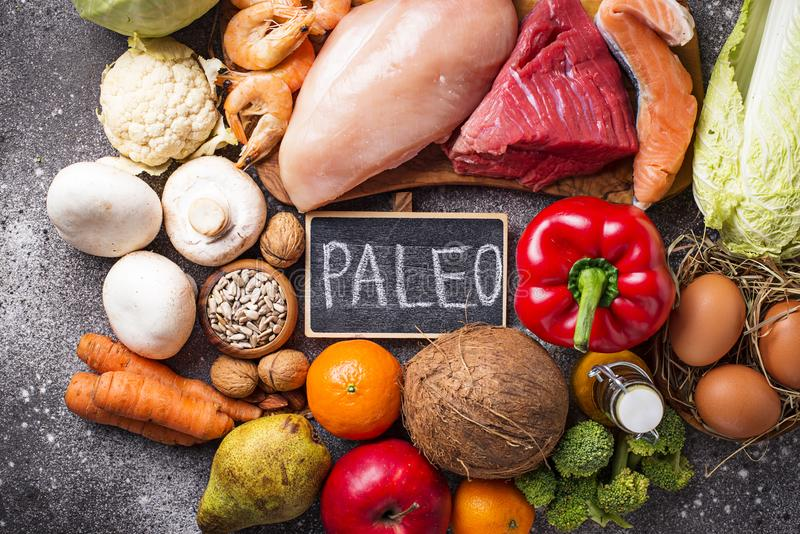
Why is Paleo Diet so Popular?
The paleo diet is often touted as being a healthier way of eating because it eliminates processed foods, added sugars, and whole grains. This leaves a person with a diet of lean meats, fruits and vegetables, nuts and seeds, coconut oil.
While the majority of studies done on this style of eating show benefits such as reduced waist circumference and improved blood sugar levels some people claim that it may not be for everyone or that more studies need to be done before coming to any conclusions.
But why is it so popular?
There are many health benefits attributed to following a paleo diet including reducing weight gain, cholesterol levels, high blood pressure, and even cancer risk. Additionally, European Journal of Clinical Nutrition found that A paleolithic diet was shown to result in greater short-term improvements in insulin sensitivity than either low-fat/high-carbohydrate diets or Mediterranean diets.
The popularity of the paleo diets may also be due to how easy it is for most people.
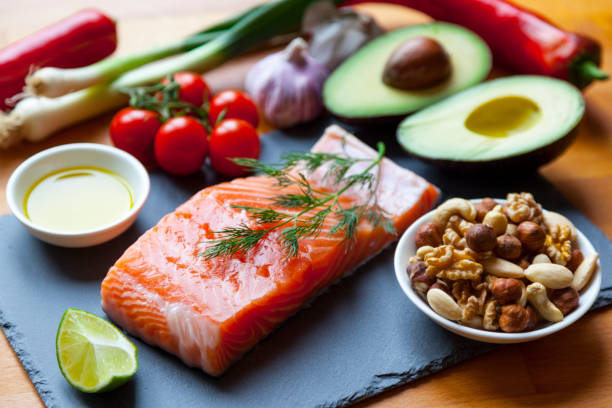
Types of Paleo Diet
Grass fed is one way to stay true to a paleo diet because it means your meat has eaten fresh grasses and insects from natural pastures. Grass fed meat is better for human health and animal welfare, and can be easier on the environment than meat from grain-fed animals. The paleo diet may help improve athletic performance, reduce chronic disease risk, and support recovery after exercise.
Here are 3 types of the paleo diet:
1. Primal Paleo
2. The Normal Paleo
3. The Strict Paleo
A Paleo Diet Meal Plan
This plan is low-carb, high-protein and relies heavily on healthy fats. The benefits of this diet are numerous and many find it’s sustainable as well because you don’t have to cut out entire food groups. If you're trying to lose weight, this diet will reduce your caloric intake by limiting carbohydrate intake. American Journal of Clinical Nutrition found that ketogenic diets result in more energy, better control over blood sugar levels and greater weight loss than a standard low-fat diet.

An ideal paleo diet plan consists of consuming fruits, vegetables, lean proteins like fish and poultry (yes, including red meat), healthy fats like olive oil and avocado oils.
A large number of those who stick with the paleo diet for more than six months report increased mental clarity, better sleep quality and improvements in mood disorders such as depression or anxiety.
The benefits of the paleo diet are plentiful.
Paleo Diet Food List
Much of this list is dependent on personal preference and your goal. Regardless, all foods listed below are generally considered paleo-friendly, which means that they are natural and unprocessed, contain minimal amounts of sugars or chemicals, are nutrient-dense, and offer a balance of omega 3s to omega 6s.
Fruits: Bananas, avocados, applesauce, oranges, blueberries, strawberries.
Vegetables: Broccoli and cauliflower (raw), Brussels sprouts (raw), bell peppers (raw), spinach (raw), kale (raw).
Proteins: Grass-fed beef and lamb; seafood like wild salmon and sardines; eggs; organic chicken breasts; nuts like almonds and walnuts; coconut oil.
Snacks: Fruit, dark chocolate (85% cocoa), nuts, seeds, homemade muffins made with coconut flour and almond meal, homemade granola bars made with almond flour. Healthy fats include avocado, raw olives and raw sauerkraut.
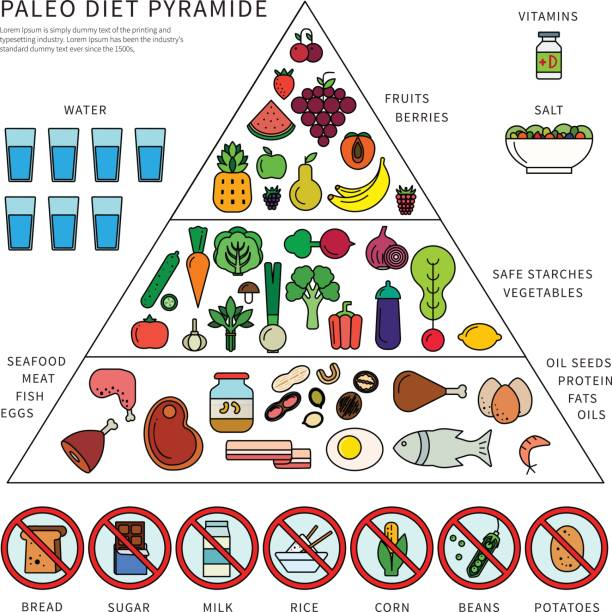
Coffee drinkers can drink filtered coffee without additives as long as it’s black. Tea drinkers should stick to brewed green tea without added sugar or milk but can add lemon if desired.
Foods to avoid on Paleo diet are any processed foods containing artificial colors, flavors, sweeteners, preservatives, and other artificial additives. Also not allowed are grains such as wheat products, legumes including peanuts and soybeans, dairy products such as cow’s milk and yogurt. As with most diets in existence today, exercise is recommended in order to see results.
Paleo Diet Pros and Cons
Experts say that the paleo diet is one of the most effective diets because it avoids processed food, and moves your body to what it was designed to do. The diet also has a host of additional benefits such as a heightened sense of self-confidence, increased energy levels, better sleep, reduced bloating, weight loss and more.
It’s important to note that while the paleo diet is based on eating whole foods, not all calories are created equal. Consuming nutrient-dense calories from animal sources like grass-fed beef or wild salmon may be an even healthier option than eating plants.
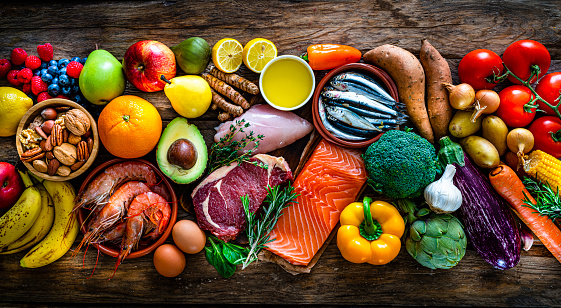
Pros of Paleo Diet:
1. Increased Energy Levels
2. Weight Loss
3. Improved Sleep Quality
4. Reduced Bloating
5. Better Mental Clarity
6. Strengthened Immune System
7. More Satisfying Food
8. Taste Better
9. Lower Stress Levels
10. Hormone Balance
11. Healthier Skin
12. Easier Digestion
13. Increased Brain Function
14. Reduction in Chronic Disease Risk
15. Stabilized Blood Sugar
16. Decreased Anxiety
17. Greater Happiness
18. Fewer Cravings
19. Enhanced Mood
20 Best Anti-Aging Tool
Cons of Paleo Diet
1. It does not provide enough carbs and protein for optimal health.
2. The diet is expensive and hard to maintain.
3. It's hard to stick with.
4. You may miss out on some essential nutrients.
5. Eating in a restrictive way can also lead to binging when you return to your old habits.
6. There are many Paleo products that have high levels of sugar, fat, or salt which can be harmful.
7. If you're an athlete, this diet might not be best for you as it has a limited amount of carbohydrates and sugars which can impact performance and recovery time.
8. Many people start following this diet because they want to lose weight but there is no guarantee that it will work for everyone because everyone's body reacts differently to food.
9. For those who don't see results, following the Paleo Diet for too long can be detrimental because it takes away from eating foods rich in other necessary vitamins and minerals like iron, calcium, vitamin D, zinc and omega-3 fatty acids.
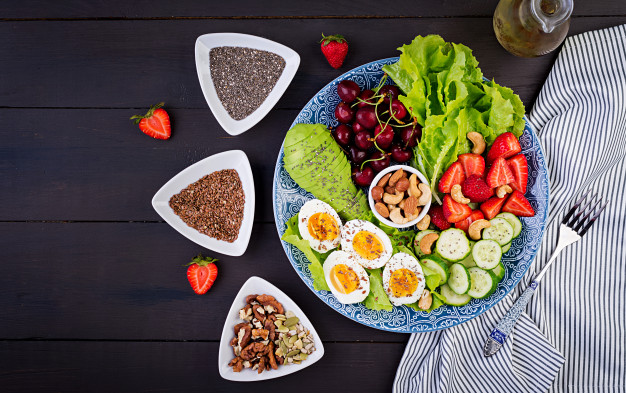
Paleo Diet Recipes
A quick and easy breakfast option is to toss a banana, 1-2 tablespoons of peanut butter, and 1/4 cup of oats into a blender. Blend until it reaches your desired consistency, then store in an airtight container in the fridge for up to one week. This power combo will keep you fueled and satisfied all morning long!
While you don’t have to be vegan or vegetarian to reap the benefits of a paleo diet, if you are considering making changes for health reasons, it’s important to check with your doctor first. He can help determine whether eliminating certain foods and eating in line with what your body naturally craves will make a difference for you. Do you have a sensitivity or allergy to grains or legumes?
Another recipe for paleo dieters is a simple omelet made from 3 eggs, 1 tablespoon coconut oil, salt and pepper to taste. Crack three eggs into a bowl (separate whites from yolks) and whisk together before adding to pan over medium heat. Cook on each side for about 2 minutes (or until done). Next add coconut oil to heated pan and swirl around so that it coats the pan evenly.
Paleo Diet 7-Day Meal Plan
To get started, you can plan out a 7-day meal plan and grocery list. This is a great way to start transitioning your diet from processed foods. Some ideas for getting started: breakfast with eggs, bacon and fruit; lunch with avocado, cucumber slices and turkey; dinner with veggies, olive oil and grilled chicken.
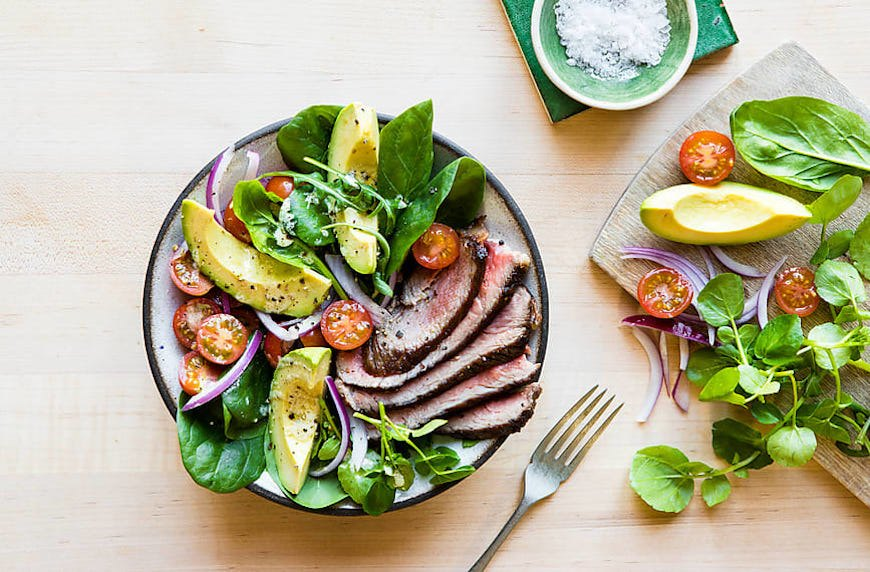
Here are some other key aspects of the diet that experts recommend adhering to for best results:
There’s a lot of conflicting information out there about nutrition, so you should do plenty of research before deciding on your diet. The best part about eating paleo is that it can work for you, no matter what diet plan you follow.
Here's 7-day meal plan for paleo dieters
Day 1:
Breakfast with eggs, bacon and fruit; lunch with avocado, cucumber slices and turkey; dinner with veggies, olive oil and grilled chicken.
Day 2:
Egg white omelet, sweet potato fries w/ guacamole dipping sauce, green salad w/ apple cider vinegar dressing.
Day 3:
Eggs over easy with sautéed spinach and kale, applesauce on side; lunch as leftovers or tuna sandwich, celery sticks dipped in almond butter; dinner as leftovers or pan-fried pork chops, oven roasted broccoli.
Day 4:
Eggs scrambled with zucchini and mushrooms, low fat yogurt mixed with cinnamon, raisins and walnuts; lunch as leftovers or hard boiled eggs w/ pepperoncini; dinner as leftovers or salmon fillets baked in foil packet w/ olive oil, lemon juice & rosemary.
Day 5:
Ham and cheese frittata, sliced pear; lunch as leftovers or quinoa stuffed peppers; dinner as leftovers or braised beef stew.
Day 6:
Scrambled eggs with sautéed onions, bell peppers and garlic served on whole wheat toast; lunch as leftovers or steak salad; dinner as leftovers or grilled shrimp wrapped in prosciutto.
Day 7:
Oatmeal cooked with coconut milk, nutmeg and cinnamon topped with banana slices; lunch as leftovers or teriyaki salmon patties; dinner as leftovers or ribeye steak marinated in Dijon mustard.
FAQs
Is paleo effective for weight loss?
The diet encourages eating clean foods and avoiding processed items. This is one of the best features of a paleo diet. Studies have shown that processed foods can lead to weight gain, especially when they are high in sugar and carbohydrates (things which are encouraged on a paleo diet).
There has been mixed results for this; some research finds that a long-term paleo diet can lead to increased weight loss, while other studies show no difference in weight loss as compared to people who follow other types of diets.

What can't you eat on paleo?
If you're curious about what you can and can't eat on a paleo diet, then here are some of the basics: You'll have to say goodbye to grains (anything made from wheat, rice, corn, oats or barley), dairy products (including eggs and yogurt), refined sugar, legumes (like beans and peanuts) and added sugars.
Are bananas on paleo diet?
No, bananas are not on the paleo diet. The high sugar content in bananas is incompatible with a paleo lifestyle.
Is Greek yogurt paleo approved?
This is where many people get tripped up: dairy, sugar, grains and legumes are not paleo approved. However, Greek yogurt is perfectly paleo-friendly as long as it doesn't contain added sugars or ingredients that are not allowed on the diet.
Is coffee paleo friendly?
It depends. If you want to be more strict, coffee will not be allowed as it can cause acid reflux. However, if you're looking for a more liberal version of the diet, there are a few things that can be consumed in moderation and coffee is one of them! Of course, be sure to eat whole foods when it comes to beverages.
While the paleo diet can seem overwhelming at first, many experts recommend starting with small changes to make transitioning easier. One easy change is skipping grains for breakfast—since they can trigger blood sugar spikes and crashes throughout the day—and replacing them with eggs or protein shakes instead.
Another suggestion is opting for pasture-raised meats and dairy over grain-fed products which contain higher amounts of inflammatory omega-6 fats.
How long does it take paleo diet to work?
Regardless of what the experts say, many people find that switching to a paleo diet is incredibly helpful for shedding pounds, increasing energy levels, and improving health. If you have an autoimmune disease or are pre-diabetic and need to lose weight quickly, you should consult with your doctor before adopting a paleo diet.
The average weight loss reported by those following this plan is about 10 pounds per month.
What are the negative effects of the paleo diet?
The Paleo diet is the latest fad in weight loss diets, and it may be a viable option for many people who are just looking to lose a few pounds. For those with serious conditions such as diabetes or heart disease, however, this type of diet may be much too restrictive. In addition, experts worry that this high-protein diet will lead to calcium deficiency and decrease bone density over time, leading to osteoporosis and brittle bones in later life.
Why do the Paleo diet?
The weight loss benefits of going Paleo are well documented. Eating a whole foods diet filled with fresh, natural ingredients is key for not only keeping you on track but also for helping your body release toxins that can lead to bloating and irritability.
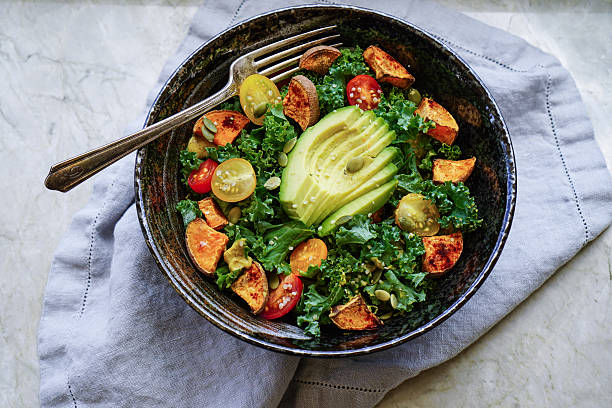
Is paleo diet scientifically proven?
Yes. The Paleolithic diet takes an evolutionary perspective to nutrition. It is based on the idea that modern-day humans should follow what people in Paleolithic times consumed when they were more physically active and more closely resembled human anatomy and physiology. Paleolithic peoples only ate naturally occurring, wild-grown plants and animals. Drastically reducing or removing grains, legumes, dairy products, refined sugars, salt and refined vegetable oils from your diet can cause great changes in your overall health.
What happens to your body when you eat paleo?
Paleo is a way of eating where you only eat foods that can be hunted or gathered. As such, this type of diet means you're eliminating processed foods, sugars, dairy, and grains to name a few things. This means that you'll be getting high-quality fats, which are incredibly important for your body.
Is Keto and paleo the same?
Paleo dieters are often criticized for eating a high-fat, high-protein diet, which is why some people refer to it as the low-carb, high-fat or ketogenic diet. But it can't be reduced to these labels: Each diet has a specific eating pattern and list of approved foods. For example, in general keto restricts carbs to 20 grams per day or less and eliminates all grains, beans and starchy vegetables from the approved food list.
Conclusion
Experts say that cutting out processed and high-carb foods can help improve your health by giving you a fresh start. In some cases, it can even reverse serious health conditions like type 2 diabetes. Plus, those who are looking to lose weight may see a drop in the scale after adopting paloe diet.
What does a typical day on the Paleo Diet look like?
As with most diets, there is no strict guideline for what you should eat on a daily basis. The main thing is to limit your intake of sugar and carbohydrates while upping your intake of healthy fats, fiber, vegetables, protein, and other vitamins/minerals.
If you're considering starting this diet, talk to your doctor about any risks or concerns first before jumping into any drastic changes in your lifestyle.
Let us know if you have any more questions!
Comments
Post a Comment